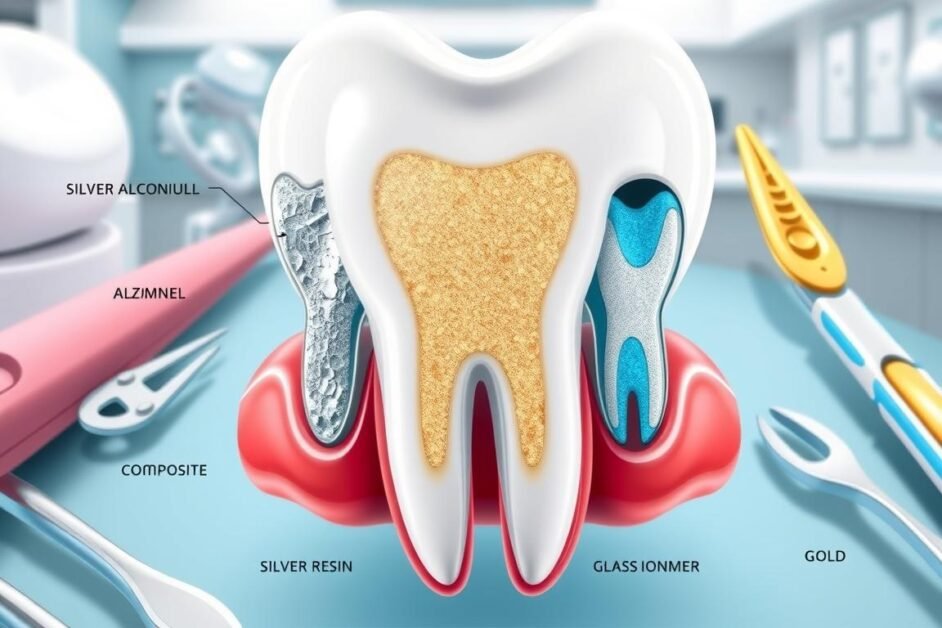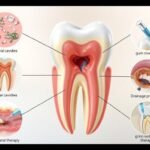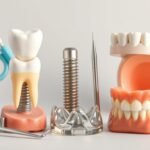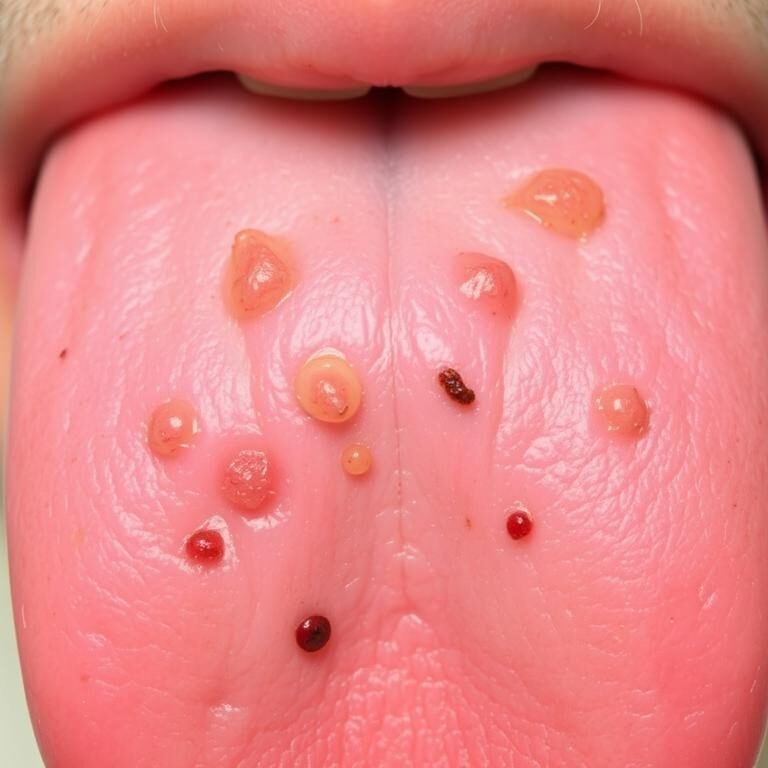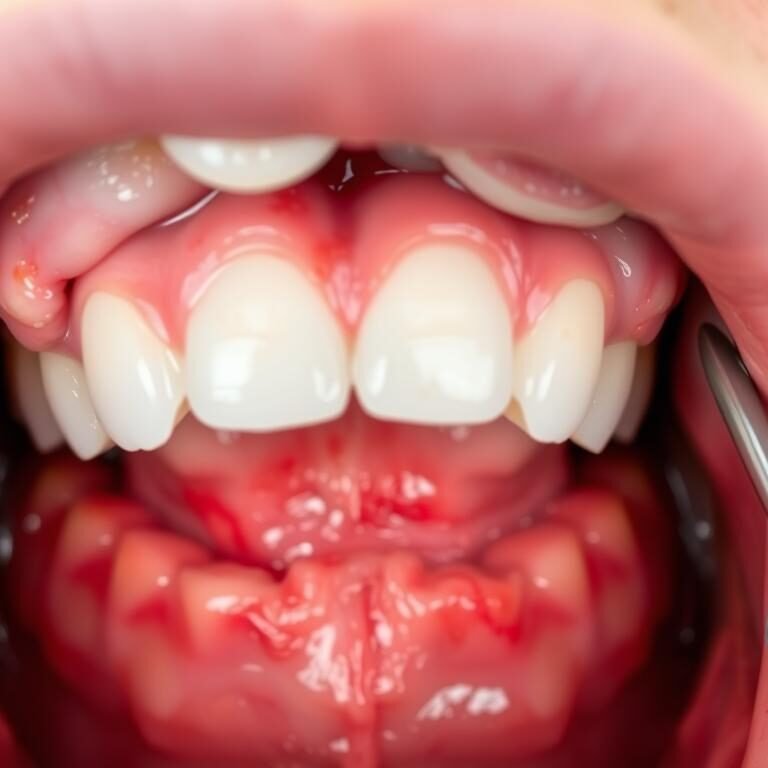Feeling a sharp pain while biting into something you love can be scary. It’s not just pain; it’s a sign that your teeth might be in trouble. The fear of dental visits and treatment options is common.
In the U.S., about 91% of adults have had a filling. This shows that many people face similar dental health challenges.
This article will look at different fillings, procedures, and care tips for better dental health. Knowing about fillings helps you prevent cavities and keep your smile healthy. Being informed about fillings and their care can protect your teeth from decay.
Table of Contents
What are Dental Fillings?
Dental fillings are key in fixing teeth damaged by decay or wear. When a dentist finds a cavity, they use special materials to fill it. This helps keep the tooth strong and prevents more damage.
The type of filling used affects how long it lasts and how it looks. Composite fillings match your teeth well and can last 5 to 10 years. Silver amalgam fillings can last 10 to 15 years and are often covered by insurance. Gold and porcelain fillings are more expensive but last longer.
Dental fillings are vital for keeping your teeth healthy. They help fix teeth and stop more problems from happening.

Types of Fillings for Teeth
Dental fillings are made from different materials. Each has its own benefits and drawbacks. Knowing about the types of fillings for teeth helps you choose what’s best for you.
Composite Resin Fillings
Composite fillings are made from plastic resins that match your teeth. They’re great for teeth you can see because they look natural. These fillings usually last about 5 years.
Silver Amalgam Fillings
Silver fillings are strong and last 10 to 15 years. They’re cheaper than many options but don’t look as good. Some people might be allergic to the mercury in them.
Gold Fillings
Gold fillings are very durable and can last over 15 years. But, they’re very expensive, up to 10 times more than silver fillings. Their cost is worth it for their long life and strength.
Ceramic Fillings
Ceramic fillings are made from porcelain and look great. They’re also good at resisting stains. They’re pricey but many think they’re worth it for their looks.
Glass Ionomer Fillings
Glass ionomer fillings are used under the gum line because they release fluoride. They don’t last as long, about 5 years or less. They’re not as strong as other fillings but offer extra protection.
| Type of Filling | Lifespan | Aesthetics | Cost |
|---|---|---|---|
| Composite Fillings | ~5 years | Tooth-colored | Moderate |
| Silver Fillings | 10-15 years | Metallic | Low |
| Gold Fillings | 10-15 years | Metallic | High |
| Ceramic Fillings | Varies | Tooth-colored | High |
| Glass Ionomer Fillings | ~5 years | Translucent | Moderate |
Teeth Filling Procedure
The teeth filling procedure is a detailed process that makes sure the tooth is fixed well and the patient feels comfortable. The first steps are about getting the tooth ready, which leads to good results. Knowing about this process can help ease worries and give a clear idea of what happens during the visit.
Preparation of the Tooth
The first thing done is giving a local anesthetic to numb the area. This is done in about 95% of cases to keep the patient comfortable. Then, the dentist uses special tools to remove the decay or damaged part of the tooth.
This step is key because it makes sure the cavity is cleaned well. It removes all bacteria and debris.
Placing the Filling
After the tooth is ready, the dentist puts in the filling. The type of filling used decides how it’s done. For composite resin fillings, layers are built up and then set with an LED light. This makes the filling strong and long-lasting.
Articulating paper might be used to check if the bite feels right. This ensures the filling fits perfectly.
Finishing Touches
The last part of the procedure is shaping and polishing the filling. This makes it smooth and looks like the natural tooth. This careful work improves the filling’s look and makes chewing more comfortable.
Many patients notice less sensitivity after the filling. About 60% say they feel better after it’s done.
Cost of Teeth Fillings
The cost of teeth fillings can change a lot. It depends on the filling material, how bad the decay is, and the procedure’s complexity. Where you live also plays a part. Knowing these factors helps you plan your dental care and budget better.
Factors Influencing Filling Cost
Several things can affect the cost of teeth fillings:
- Type of filling material: Amalgam is usually cheaper than composite or gold.
- Extent of decay: Bigger decay means bigger fillings or more treatments, raising the cost.
- Location of the filling: Back teeth fillings might cost more than front teeth ones because of easier access.
- Additional dental procedures: Treatments like anesthesia or pulp caps can increase the total cost.
Insurance Coverage Considerations
Dental insurance is key in managing filling costs. Most plans cover up to 80% of filling costs after you meet the deductible. The coverage for different fillings can vary. For example, composite fillings might be covered like traditional amalgam ones. Always check your insurance for specific details.
Comparison of Material Costs
| Type of Filling | Cost Range (1-2 Teeth) | Cost Range (3 or More Teeth) |
|---|---|---|
| Silver Amalgam | $50 – $200 | $150 – $400 |
| Composite Resin | $150 – $300 | $200 – $550 |
| Gold | $300 – $1,000 | $450 – $1,800 |
| Porcelain | $300 – $4,500 | N/A |
Knowing the prices of different fillings helps with budgeting for dental care. Choosing the right filling balances your dental needs with your budget. This ensures you get the best care for your teeth.
Signs You May Need a Filling
Knowing when you need a filling is key to good dental health. Several signs can point to a problem that needs a dentist’s help. Paying attention to these signs can stop bigger dental problems later.
Tooth Pain
Tooth pain often means you have a dental issue, like cavities or decay. Pain that lasts, or gets worse with heat or cold, shows your enamel is wearing thin. This might mean you need a filling. Sharp or throbbing pain could mean the decay is serious and you need to see a dentist right away.
Ignoring tooth pain can lead to bigger problems. So, it’s important to notice this symptom.
Changes in Tooth Appearance
Big changes in how your teeth look can mean you need a filling. Look for yellow or brown spots, which usually mean decay. If you see holes or pits, it’s a sign of cavities that need to be fixed fast.

If you see these signs, don’t wait to see your dentist. They can stop things from getting worse and prevent bigger problems.
| Signs | Description |
|---|---|
| Tooth Pain | Pain when consuming hot or cold foods may indicate enamel wear or decay. |
| Tooth Sensitivity | Sensitivity can point to possible cavities forming, requiring fillings. |
| Discoloration | Yellow or brown hues signal underlying decay that may need a filling. |
| Visible Holes | Holes or pits in teeth are clear signs of cavities needing treatment. |
Knowing these symptoms is important. Fixing tooth pain or tooth appearance changes early can keep your teeth healthy. It can also avoid more serious treatments later.
Caring for Your Fillings
Proper care after dental fillings is key to keeping them lasting longer. The right oral hygiene after filling helps your fillings stay strong. It also stops new dental problems from starting.
Oral Hygiene Practices
Brushing and flossing every day is vital for caring for fillings. Use a soft-bristled toothbrush and gentle strokes. Brush twice a day and floss once.
This keeps your filled teeth clean and comfortable. Rinsing with salt-water or a non-alcoholic mouthwash can also help. It eases any leftover pain and aids in healing.
Foods to Avoid After a Filling
Stay away from hard, chewy, or sticky foods like candies and tough meats right after a filling. These can harm your filling, mainly in the first 24 hours. Eat soft foods like eggs, yogurt, and smoothies instead.
Stick to soft foods for about two weeks. This lets your filling settle without any issues.
Regular dental check-ups are important. They help check your fillings and watch for any problems. For more on dental care, visit this resource.
Teeth Filling Front Teeth Options
When it comes to filling front teeth, looks matter a lot. Dental options for the front teeth need to be chosen carefully. This is because these teeth are visible when we smile and talk.
Composite resin fillings are a top pick for front teeth. They match the color of your teeth well. Made from resin and glass, they last about five years and look natural.
Ceramic fillings, made from porcelain, last over 15 years. They are as durable as gold fillings but can be more expensive. They are a good choice for those who want their teeth to look natural.
Gold fillings are not often used for front teeth because they are too noticeable. They last a long time, but their color makes them less popular for the front.
It’s important to talk to a dentist before getting your front teeth filled. They can help you choose the best option for your teeth and your budget. For more information on keeping your teeth looking good, check out this article.
| Filling Type | Longevity | Cost Comparison | Aesthetic Quality |
|---|---|---|---|
| Composite Fillings | 5 years | Up to 2x amalgam fillings | Excellent |
| Ceramic Fillings | 15+ years | Similar to gold fillings | Excellent |
| Gold Fillings | 10-15 years | Up to 10x amalgam fillings | Poor |
| Glass Ionomer Fillings | 5 years or less | Lower than composite fillings | Fair |
Can You Eat After Filling Teeth?
After getting a dental filling, it’s important to know when to start eating again. It’s best to wait at least a couple of hours before eating. This lets the filling set, which is key for composite fillings that harden with a special light.
For silver amalgam fillings, you should wait about 24 hours for them to reach their full strength. Even though composite fillings harden fast, waiting a bit longer is safer if you’ve had local anesthetic. This is to avoid accidentally hurting your cheeks or tongue while numb.
When it comes to eating after a filling, there are some foods to avoid for at least two weeks. Stay away from hard, chewy, or sticky foods like nuts, candies, and crusty bread. These can put too much pressure on your tooth and might even cause it to come loose.
Sticky foods, like caramel, can also be a problem. They might pull on the filling, which is more of an issue with silver fillings. It’s also important to avoid sugary foods and drinks. They can lead to more bacteria and make your tooth sensitive.
It’s normal to feel some discomfort after getting a filling, which might make you want to eat less. Taking over-the-counter pain relievers like ibuprofen can help with this. It lets you eat without too much worry. Just remember to chew gently and avoid putting too much pressure on the tooth until your dentist says it’s okay.
For more tips on taking care of your teeth after a filling, check out important filling care information.
Teeth Sensitivity After Fillings
Many people worry about teeth sensitivity after getting fillings. Knowing why it happens can help fix the problem. Each person might feel it differently.
Causes of Sensitivity
Several things can cause teeth sensitivity after a filling. Here are some common reasons:
- The type of filling material used, with certain materials being more prone to triggering sensitivity.
- Inflammation in the surrounding gums, which can aggravate sensitivity during temperature changes.
- Excessive pressure applied to restored teeth during chewing, which is common in molars.
- Dietary habits, such as consuming sugary and acidic foods that can lead to enamel breakdown.
- Poor oral hygiene, which may result in plaque buildup and recurrent decay around fillings.
How to Manage Sensitivity
There are ways to manage sensitivity. Here are some tips:
- Use desensitizing toothpaste made for sensitive teeth.
- Keep up with good oral hygiene, like brushing and flossing regularly.
- Eat less sugary and acidic foods to protect your enamel.
- Go to the dentist for check-ups to keep an eye on your fillings.
- See a dentist if the sensitivity doesn’t go away or gets worse, as it might mean a problem with the filling.
| Filling Type | Average Lifespan |
|---|---|
| Composite Fillings | 5 to 10 years |
| Amalgam Fillings | 10 to 15 years |
| Gold Fillings | 20 years or more |
| Ceramic Fillings | 15 years or longer |
| Glass Ionomer Fillings | 5 years |
Temporary Fillings for Teeth
Temporary fillings are key in many dental situations. They’re used before permanent fillings or after root canals. They’re also vital in emergencies to stop tooth pain fast. Knowing how to care for them is important to keep them in place until a permanent fix can be done.
When Are They Used?
Temporary fillings are needed in several situations. They’re used when quick dental work is needed but a permanent fix isn’t possible right away. Here are some common times:
- After a root canal, to heal while waiting for a permanent crown.
- To ease pain from decay or damage, giving relief and function until a permanent fix is applied.
- In cases of big decay during the first dental visit, to stabilize the situation.
These fillings are made from materials like zinc oxide eugenol, Cavit, or glass ionomers. They last from a few weeks to months. They’re often bright white, gray, or even blue or pink, making them easy to spot.
Maintenance Tips for Temporary Fillings
Keeping temporary fillings in good shape is key. Here are some tips:
- Avoid eating on the affected side for a few hours after getting the filling to keep it in place.
- Don’t chew hard foods that could crack or knock out the filling.
- Brush gently around the filling area to avoid problems.
- Make a follow-up appointment in 2 to 3 weeks to check on the filling and plan for a permanent one.
Some people might feel some sensitivity after a temporary filling is removed. This usually goes away quickly. These fillings help keep your teeth working and prevent them from shifting until a permanent fix is in place.
For more dental care tips and info, check out this resource. Knowing how to take care of temporary fillings helps make the switch to permanent ones smoother.
Signs of Broken Teeth Filling
It’s key to know the signs of a broken teeth filling for good dental health. Fillings that aren’t cared for can crack or loosen, causing pain and decay. Spotting these signs early can lead to quick dental visits and keep your fillings in good shape.
What to Look Out For
- Sensitivity to Temperature: Sharp pain from hot or cold foods might mean your filling is broken.
- Visible Cracks: Seeing cracks in your filling means you need to see a dentist right away.
- Filling Detachment: If your filling is out or feels loose, you need to see a dentist to avoid bigger problems.
- Increased Pain When Chewing: Pain while chewing could mean your filling is not doing its job.
- Bad Breath: Bad breath can happen if bacteria get trapped by a broken filling, leading to infection and decay.
Regular dental visits are vital for keeping your fillings in check and catching problems early. If you think your filling is broken, get professional help to stop things from getting worse. For tips on preventing dental issues, check out dental injury prevention resources.
Dental Filling Options for Kids
Choosing the right dental filling for kids is key to their oral health. Kids often get cavities, so early treatment is important. There are many filling materials, each with its own benefits and drawbacks.
Composite fillings are liked because they look like real teeth. They last long and are good for kids’ busy lives. They work well for small to medium-sized fillings and can last 10 to 12 years with good care.
Amalgam fillings are strong and used in back teeth. They’ve been used for over a century and are affordable. They can last up to 15 years, making them a good value.
Gold fillings are very durable but expensive. They’re for those who want their fillings to last a long time. Ceramic fillings, made from porcelain, are also a good look but can be pricey.
Glass ionomer fillings are less expensive but may need to be replaced more often. They’re used in certain cases, like in primary teeth that don’t have big cavities.
Knowing about dental filling options helps parents make better choices for their kids. Regular dental visits and knowing about treatments are key to catching cavities early.
| Filling Type | Duration | Cost | Lifespan |
|---|---|---|---|
| Composite Fillings | 20-60 mins | $100 – $500 | 10 – 12 years |
| Amalgam Fillings | 20-60 mins | Least expensive | 15 years |
| Gold Fillings | 20-60 mins | Up to 10x amalgam cost | Long-lasting |
| Ceramic Fillings | 20-60 mins | Nearly as expensive as gold | Long-lasting |
| Glass Ionomer Fillings | 20-60 mins | Moderately priced | About 5 years |
Before and After Teeth Filling
It’s important for patients to understand the changes that happen before and after a teeth filling. Seeing the difference can show how much better dental health and looks can get. Fillings not only fix teeth but also protect them from future decay, making your mouth healthier.
Expected Outcomes
After getting a filling, patients see many benefits. Here are some key points:
- Improved Functionality: Your tooth gets stronger, making chewing and biting easier.
- Visual Enhancement: Fillings that match your tooth color can make your smile look natural.
- Longevity of Results: Fillings last different lengths of time. For example, silver and gold can last 10 to 15 years, while composite fillings last 5 to 10 years.
- Dental Health Protection: Fillings stop decay, which means less chance of needing bigger treatments later.
- Potential Sensitivity: You might feel some discomfort or sensitivity to hot and cold foods right after. But this usually goes away in a few days.
Talking to a dentist about what to expect is key. Knowing what to expect and what symptoms to watch for makes the recovery smoother.
| Filling Type | Life Expectancy | Cost Comparison | Common Sensitivity |
|---|---|---|---|
| Composite | 5 – 10 years | Moderate | Yes, short-term |
| Silver Amalgam | 10 – 15 years | Low | Yes, possible discomfort |
| Gold | 10 – 15 years | High | Less common |
| Ceramic | More than 15 years | High | Varies |
| Glass Ionomer | 5 years or less | Low | Possible initial sensitivity |
By thinking about these points, patients can get the best results. This improves both dental health and the look of their smile.
Natural Remedies for Tooth Sensitivity
People with tooth sensitivity look for natural remedies for tooth sensitivity to feel better. There are many ways to manage sensitivity naturally. These methods help keep your teeth healthy and reduce sensitivity after dental work.
Rinsing your mouth with warm saltwater is a simple yet effective solution. It helps reduce swelling and aids in healing. Clove oil, known for its pain-relieving properties, can also be used. It numbs the pain and gives quick relief.
Eating a balanced diet is key to managing tooth sensitivity. Foods high in calcium, like dairy, strengthen teeth. Avoiding acidic foods helps prevent enamel loss, improving dental health.
Using these natural remedies helps manage sensitivity effectively. Taking care of sensitive teeth proactively improves your comfort and health.
Alternatives to Filling Cavities in Baby Teeth
Cavities in baby teeth are a big worry in kids’ dental health. They affect about 20% of children aged 2 to 5. Bacteria that feed on sugars cause these cavities. It’s important to act fast, as half of kids will get a cavity by age five.
There are many alternatives to filling cavities in baby teeth. These focus on stopping cavities before they start. Fluoride treatments are one such option. They can cut cavity risk by 30% by making teeth stronger.
Silver diamine fluoride (SDF) is another good choice. It stops tooth decay in 80% of cases. It’s a non-invasive treatment that doesn’t need drilling or freezing. It’s often used before fillings.
Dental sealants are also key in kids’ dental care. They can lower cavity risk by up to 80%. They’re best for back teeth, where cavities often happen. Sealants are recommended for kids aged 6 to 14, when cavities are most common.
Resin infiltration is another option for early cavities. It treats “white spot lesions” before they get worse. When explained well, it can lead to good results.
These alternatives show the need for early action and ongoing dental care in kids. Good pediatric dental care helps kids develop healthy habits. This leads to better oral health as they grow.
Signs Tooth Filling is Failing
Dental fillings help fix cavities but can face problems. It’s important to know when a filling might be failing. Feeling pain or sensitivity to hot or cold is a common sign, affecting almost half of people.
Cracks or chips in the filling are another warning sign, seen in about 60% of cases. Gaps between the filling and tooth can trap food and bacteria. This can cause discomfort for up to 20% of people.
Some people might notice bad breath or an odd taste, affecting about 10%. Feeling pain when biting down is a symptom for about 25% of those with issues. Regular dental visits can help catch problems early.
Ignoring these signs can lead to more serious dental work. This might include crowns or even tooth removal, affecting about 25% of patients.
Common Misconceptions About Teeth Fillings
Many people believe that getting teeth fillings is always painful. But thanks to new dental technology, this is not true. Modern techniques, like local anesthetics, make the process almost painless. This knowledge can help people feel more at ease when they need a filling.
Some folks think fillings last forever. But the truth is, how long a filling lasts depends on several things. These include the filling material, how hard you bite, and how well you take care of your teeth. Regular dental visits are key to keeping your fillings in good shape.
There’s also a myth that fillings are not needed for kids because they’ll lose their baby teeth. But cavities can cause serious problems, even in kids. Getting fillings early can prevent these issues. Knowing the truth about fillings can help people make better choices for their teeth.
FAQ
What are the signs that I may need a filling?
You might need a filling if you have tooth pain that won’t go away. Also, if your teeth are sensitive to hot or cold. Visible changes like discoloration or holes are other signs.
How long should I wait before eating after getting a filling?
Wait at least 2 hours before eating after a filling. This lets the filling set right. Avoid hard or chewy foods for the rest of the day.
Can I brush my teeth after a filling?
Yes, you can brush your teeth after a filling. But wait at least 24 hours for composite fillings. Always listen to your dentist’s advice.
What should I do if my filling feels loose or breaks?
If your filling feels loose or breaks, see your dentist right away. Look out for sharp pain while chewing or visible cracks.
What types of fillings are best for front teeth?
Composite resin and ceramic fillings are great for front teeth. They match your natural teeth’s color and look better.
What is the cost of dental fillings?
Dental filling costs vary. They depend on the filling material, decay extent, and insurance. Composite fillings are usually pricier than silver amalgam ones.
What causes sensitivity after getting a filling?
Sensitivity can come from the filling material, gum inflammation, or tooth trauma. It usually gets better with time.
Are there any alternatives to filling cavities in baby teeth?
Yes, fluoride varnish and silver diamine fluoride can stop decay in baby teeth. They’re less invasive than fillings.
How can I care for my fillings after the procedure?
Keep your fillings healthy by brushing and flossing. Avoid hard or sticky foods to keep the filling in place.
What are some natural remedies for tooth sensitivity?
Natural remedies include saltwater rinses and clove oil. Eating a balanced diet also helps your dental health.

